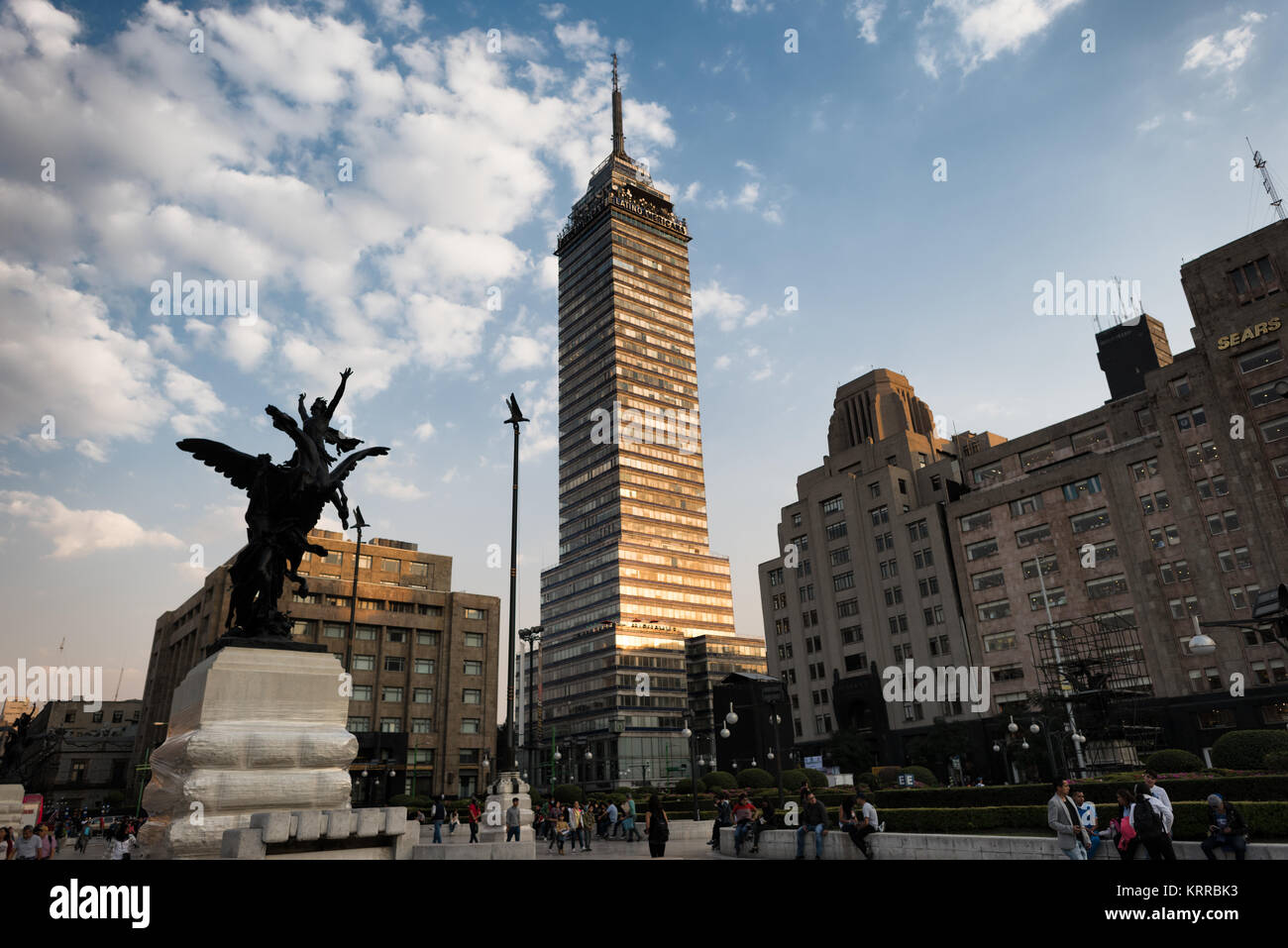MEXICO CITY, Mexico — Torre Latinoamericana seen from the plaza in front of the Palacio de Bellas Artes. The highrise towers above the Centro Historico district in Mexico City and is one of the area's major landmarks. It was the first major skyscraper built on the area known for high seismic activity.

Image details
Contributor:
David Coleman | Have Camera Will Travel / Alamy Stock PhotoImage ID:
KRRBK3File size:
90 MB (2.4 MB Compressed download)Releases:
Model - no | Property - noDo I need a release?Dimensions:
6867 x 4583 px | 58.1 x 38.8 cm | 22.9 x 15.3 inches | 300dpiDate taken:
12 January 2017Location:
Torre Latinamericana, Mexico City, Cuidad de Mexico, MexicoMore information:
Photograph by David Coleman. The Torre Latinoamericana is a hallmark of Mexico City's skyline. This iconic skyscraper, standing at 188 meters tall (including its antenna), was the tallest building in Latin America upon its completion in 1956. The tower boasts 44 floors and is located in the heart of Mexico City's historic center, offering panoramic views of the sprawling urban landscape from its observation decks and restaurant. Constructed by Mexican engineer Augusto H. Álvarez, the Torre Latinoamericana is revered as a symbol of the city's architectural prowess and resilience in the face of seismic activity. The structure was the world's first major skyscraper successfully built on highly active seismic land, surviving significant earthquakes in 1957 and 1985 without any structural damage. This remarkable feat of engineering has since been recognized by the American Society of Civil Engineers. The building's modernist design is characterized by its steel frame and glass curtain walls, with the top floors tapering to a slim spire. The tower's exterior is illuminated at night, enhancing its visibility in the cityscape. Inside, the Torre Latinoamericana houses offices, a museum showcasing its history and engineering, and an observation deck that provides a 360-degree view of Mexico City. From this vantage point, visitors can see notable landmarks such as the Palacio de Bellas Artes, Alameda Central, and the Zócalo. The Torre Latinoamericana, with its blend of historic significance, architectural innovation, and cultural relevance, remains a cherished symbol of Mexico City's growth and resilience as a global metropolis.